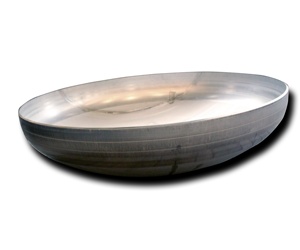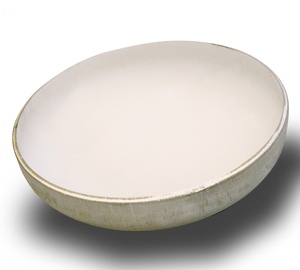
All categories
Featured selections
Trade Assurance
Buyer Central
Help Center
Get the app
Become a supplier

(33084 products available)
























Tank heads come in various shapes and dimensions, each serving specific design and operational purposes. The tank head's shape and type are determined by factors such as the fluid it contains, the required pressure rating, and the tank's application.
Below are the common types of tank heads:
Semi-Elliptical Heads
Semi-elliptical tank heads are among the most commonly used due to their moderate depth and pleasing shape. This head is usually constructed with a ratio of 2:1 for diameter to length, and this makes it suitable for areas of low to moderate pressure. The rounded shape enables smooth fluid dynamics, and this reduces the risk of sediment accumulation in storage tanks.
Hemisphere Heads
As the name suggests, hemispherical tank heads are dome-shaped and less embattled than their elliptical counterparts. They are made of thick steel and can withstand intense pressures. They are mostly used in high-pressure environments like chemical processing plants. The design provides extreme strength and minimises dead zones for fluid.
Conical Heads
Conical heads taper toward a point or a smaller diameter, unlike the others, which are rounded. These heads are regularly used as transition pieces between the cylindrical body of a tank and tertiary or outlet pipes. They help in effective fluid movement and are preferred in tanks with variable contents or higher viscosity fluids.
Flat Heads
Flat heads are easiest to manufacture and can be attached to a vessel. They are ideal when lower pressures are involved as they are not efficient. Due to their simple design, flat heads are sometimes fitted with stiffening rings at the perimeter to counterbalance the pressure force exerted on the head.
Ellipsoidal Heads
Also called ellipsoidal dished tank heads, these are a middle compromise between the semi-elliptical and torispherical designs. They are more rounded than the semi-elliptical, which offers better fluid flow, and because they are not as curved, the manufacturing cost is lower. These heads are widely used in many industries and are quite versatile.
Tank heads are manufactured in various materials to satisfy temperature, pressure, and chemical compatibility requirements. Below is an overview of the commonly used materials:
Carbon Steel
In all, carbon steel is a popular material due to its strength and cost-effectiveness. That's why it's mostly used in manufacturing tank heads for external environments and in storage of non-corrosive chemicals like water, fuels, and many solvents. To prevent corrosion, the stainless steel carbon comes in treated versions so that they survive in wet, salty, or acidic surroundings without degradation.
Stainless Steel
Stainless steel, which has strong chromium content, makes it rust resistant. This property makes it fitting for head tanks in food and beverage and pharmaceutical and chemical processing industries. Any Chemical reactions reduction's either increased sanitation standards or increased longevity. Common grades used in tank heads are 304 and 316, which offer resistance to pitting and corrosion for varying degrees of exposure.
Aluminum
When low weight and good corrosion resistance is required, then aluminum acts as the material of choice. Tank heads are mostly found in transport vehicles, aircraft, and marine applications where low weight takes precedence over pressure resistance. Aluminum tank heads are good at resisting corrosion, particularly in marine settings and when exposed to acidic substances.
Nickel-Alloy Steel
Nickel alloy steels are designed for use in extreme temperatures and pressures. They will be found in the heads of tank vessels used in chemical processing or petroleum refining and other high-stress environments. The nickel content gives excellent tensile strength even at very low and high temperatures.
Titanium
Titanium is corrosion-resistant, so it is used in tank heads that are in contact with seawater and certain acids over long periods. This resistance is combined with a very high strength-to-weight ratio. Although expensive, titanium heads offer durability and longevity in extreme adverse conditions.
Tank head customisation is done to meet specific operational requirements and space constraints. Custom tank heads are designed based on the material standard, size requirement, installation method, and load the head should contain.
Material Thickness Variations
One of the customary variations of the tank headcovers is material thickness. Thicker heads can withstand greater pressures and are better suited for high-stress environments. Thin heads are favoured where lower pressures are encountered or for lighter-weight constructions. The material and thickness will be decided based on the tank's specific pressure and temperature operating environment.
Custom Sizes and Dimensions
Tank heads can thus be designed in custom sizes and dimensions to meet unique tank requirements conforming to space constraints or intended to meet specific volume requirements. Non-standard diameter, length ratio ellipsoidal heads and conical heads are highly sought after in many industries due to their unique sizes.
Welding Types
Various welding types have been employed for attaching the heads to the tanks. These include butt welds, which are used at high pressures, and fillet welds, which are equally applicable at low pressure. The choice of welding will depend on the operational requirements. There are also different welding methods, including TIG and MIG, based on the tank material.
Customized Openings and Nozzles
Tank heads are regularly designed with specially attached nozzles and openings for various piping requirements, vents, or instrumentation. These custom sizes and placements ensure ideal fluid mechanics and accessibility for maintenance purposes. Nozzle configurations are standardised to meet specific standards, such as ANSI or API.
Stiffening Rings
When large diameter heads are fitted, stiffening rings are placed around the perimeter to bear the pressure without deforming. Custom stiffening rings are manufactured in terms of size, number of reinforcements, and spacing, depending on the diameter of the tank head and the pressure exerted on it. They are made of different materials and will either be welded or bolted, depending on the situation.
Tank heads are essential in multiple industries, providing safe storage and reliable processing. Each industry demands specific designs and materials for its tank heads, depending on the contents and operating conditions.
Chemical Industry
Tank heads play a critical role in the chemical industry, where there is need to store and process hazardous chemicals. Most custom tank heads are made of corrosion-resistant materials such as stainless steel or titanium, depending on the medium. These heads may also feature reinforced designs for enhanced pressure handling. Common applications are acid storage, gas cylinders, and reaction vessels.
Oil and Gas Industry
The oil and gas industry uses tank head lids extensively, especially in storage and transport of petroleum products and natural gas. The tank heads are fabricated to successfully handle the extremes of pressure and temperature. Hemispherical and dished heads are most common due to their strength. They are used in separators, scrubbers, and storage tanks, both underground and above ground.
Food and Beverage Industry
The food and beverage industry has special requirements regarding sanitation and corrosion resistance. Here, stainless steel tank heads are commonly used because they are easy to clean and do not support microbial growth. Customisation largely includes smooth, no-dead-zone surfaces for mixing or fermenting. They are used in wine fermentation tanks, dairy pasteurisation equipment, and breweries.
Pharmaceutical Industry
Tank heads are also widely used in this industry where tanks are used to store and process sensitive drugs and chemicals. There is strict adherence to sanitation standards and customisation for anti-contaminating purposes. Heads are also designed to withstand autoclaving. Common applications are storage vessels for active ingredients and bulk drug formulations.
Water Treatment Industry
In water treatment, tank heads are critical for storage, treatment facilities, and distribution. Common materials include carbon steel and stainless steel that are resistant to corrosion caused by chlorination and other chemical water treatment processes. Common applications are pressure filters, chlorination tanks, and water storage vessels.
The installation procedure will vary depending on the type of head and the type of weldment used. For welded heads, a clean, even mating surface will need to be prepared between the head and tank's cylindrical wall. The welding process will then be applied. Butt welds are normally used for high-pressure applications, while fillet welds are used for low-pressure.
Corrosion-resistant materials like titanium and stainless steel make tank heads for corrosive chemical processing, marine applications, and acidic substance storage. Additionally, there is also a range of protective surface treatments to enhance the head's lifespan further.
The way tank heads are maintained is directly related to the surroundings they are placed in. Regular and preventive inspections are made of marine heads to check for signs of corrosion, cracking, or material wear. Tank heads used in industries that require safety tank headcovers are subjected to non-destructive tests like ultrasonic or radiographic to detect internal flaws. Chemical cleaning and passivation are sanitation methods to prevent corrosion in the food and pharmaceutical industries.
The material used for the head, its thickness, and the tank's diameter and design determine the pressure rating. The formula is based on the ASME Boiler and Pressure Vessel Code. For spherical heads, the formula is P = 2ST/(1 + (D/h)), where P = pressure, S = material yield strength, T = head thickness, D = head diameter, and h = cylinder height.
Stiffening rings are used on large-diameter heads to help eliminate deformation caused by internal pressure. They are normally placed around the head perimeter in one or more series. These stiffeners redistribute the pressure acting on the head from the centre to the outer edges and help sustain the head's shape through reinforcement.